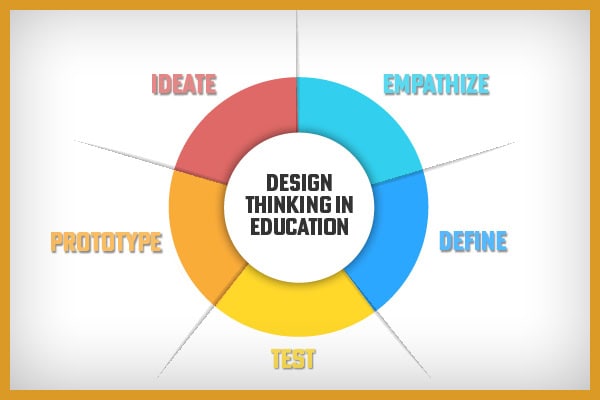Design thinking equips students with the skills and mindset needed to solve complex, interdisciplinary problems, according to an article written by Anam Javed, a Master Teacher in Residence at the Victorian Academy of Teaching and Leadership that was published in Teacher magazine.
Design thinking is a problem-solving approach that emphasizes empathy, collaboration and iteration to solve complex problems in innovative ways. The design thinking process can be described through these 5 stages, according to Javed:
Empathize: Dive deep into understanding the user’s needs and experiences.
Define: Articulate the problem that needs addressing.
Ideate: Engage in a brainstorming frenzy, unleashing creativity.
Prototype: Create tangible or conceptual representations of solutions.
Test: Trial and fine-tune the solutions.
Javed says the strategies and mindsets derived from design thinking are valuable assets for educators and students:
“Ignite with empathy: This is more than mere observation; it demands engagement. If the task for your students is to design tools for farmers, a visit to local farms or interviews with farmers can provide insights and become an essential part of your planning.
“Champion big ideas: The classroom should pulsate with creativity. No idea is too ‘out there’. Nurturing young minds to become innovators is where leaning into the general capability of critical and creative thinking comes into play. Educators use the design thinking model to create opportunities for creative thinking and play in a structured environment.
“The power of prototyping: Whether it is crafting a rudimentary model using craft supplies or employing digital tools for a simulation, prototyping crystallizes ideas.
“Iterate with community feedback: Design thinking thrives on feedback that refines student prototypes. Through prototyping and testing, students come to understand that their initial ideas may need refinement. This iterative approach teaches them to accept change and persevere when faced with setbacks.
“Learning across disciplines: Design thinking can be used across the curriculum. This promotes interdisciplinary learning, teaching students to see connections across different areas of knowledge. Javed uses this example:
‘Design a sustainable city for future generations.’
“Mathematics: Students engage in calculations concerning population projections, infrastructure budgets, and resource allocations.
“Science: Delving into sustainable energy, eco-friendly materials, and balancing ecosystems introduces a scientific perspective.
“Social Studies: The focus shifts to migration patterns, governance models, and historical examples of city planning.
“Arts: Visualization is crucial. Students can create models, sketches, and digital designs to bring their city to life.”
Design thinking’s rise in popularity as a problem-solving approach has also led to some misconceptions, says Javed:
“It’s only about design: Design thinking is a problem-solving framework that can be applied in fields beyond design, from business strategy to education and healthcare.
“It’s just brainstorming: Brainstorming is essential in the process but design thinking encompasses more, from understanding user needs to prototyping and testing.
“It always leads to innovation: Design thinking does not guarantee innovation. The process is about finding the right solution for the problem. Sometimes it might be a simple or previously known solution.
“Anyone can do it without guidance: Proper training and practice helps harness the full potential of the approach.
“It’s a trend or fad: Design thinking has gained significant attention in recent years, but it is rooted in practices that have been developed over decades, such as ‘agile’ and ‘lean’ methodologies. It is a tested approach that will continue to be relevant for problem-solving.
“When design thinking is authentically integrated into our teaching practices, classrooms become crucibles where real-world challenges meet innovative solutions, all woven through a rich tapestry of subjects,” Javed says. “And as students navigate this journey, they are not just learning; they emerge as empathetic observers, critical thinkers and collaborative problem-solvers.”
Teacher





